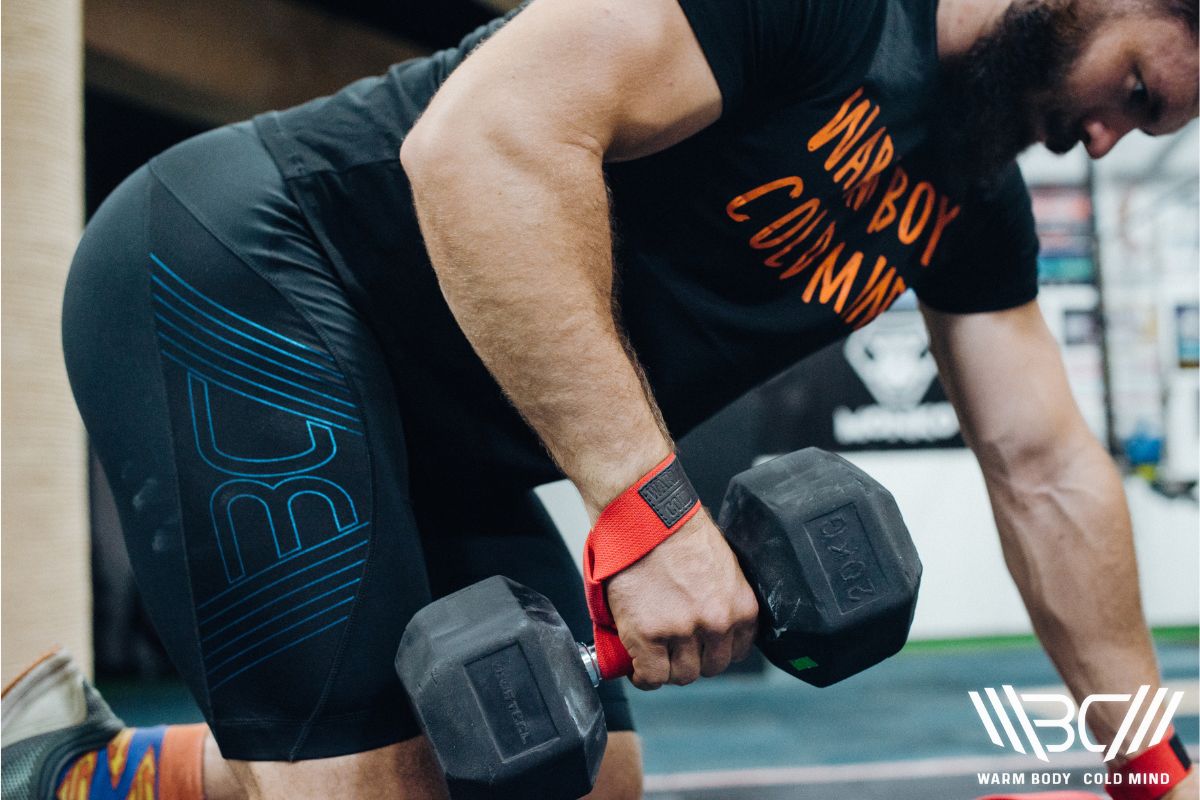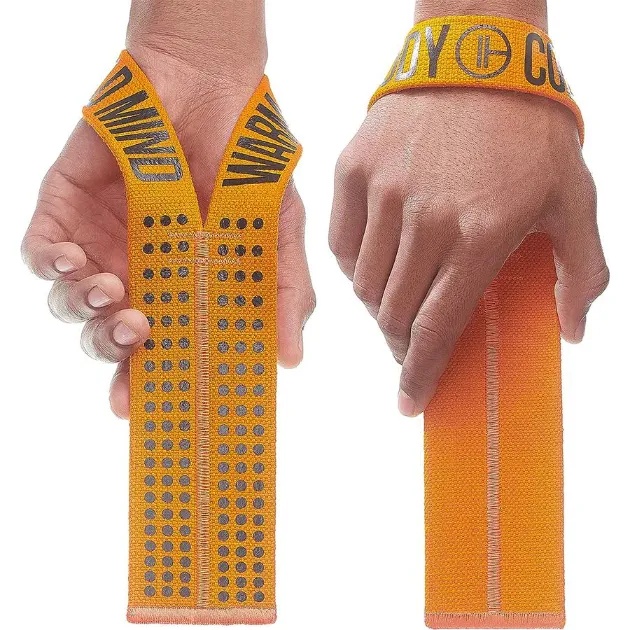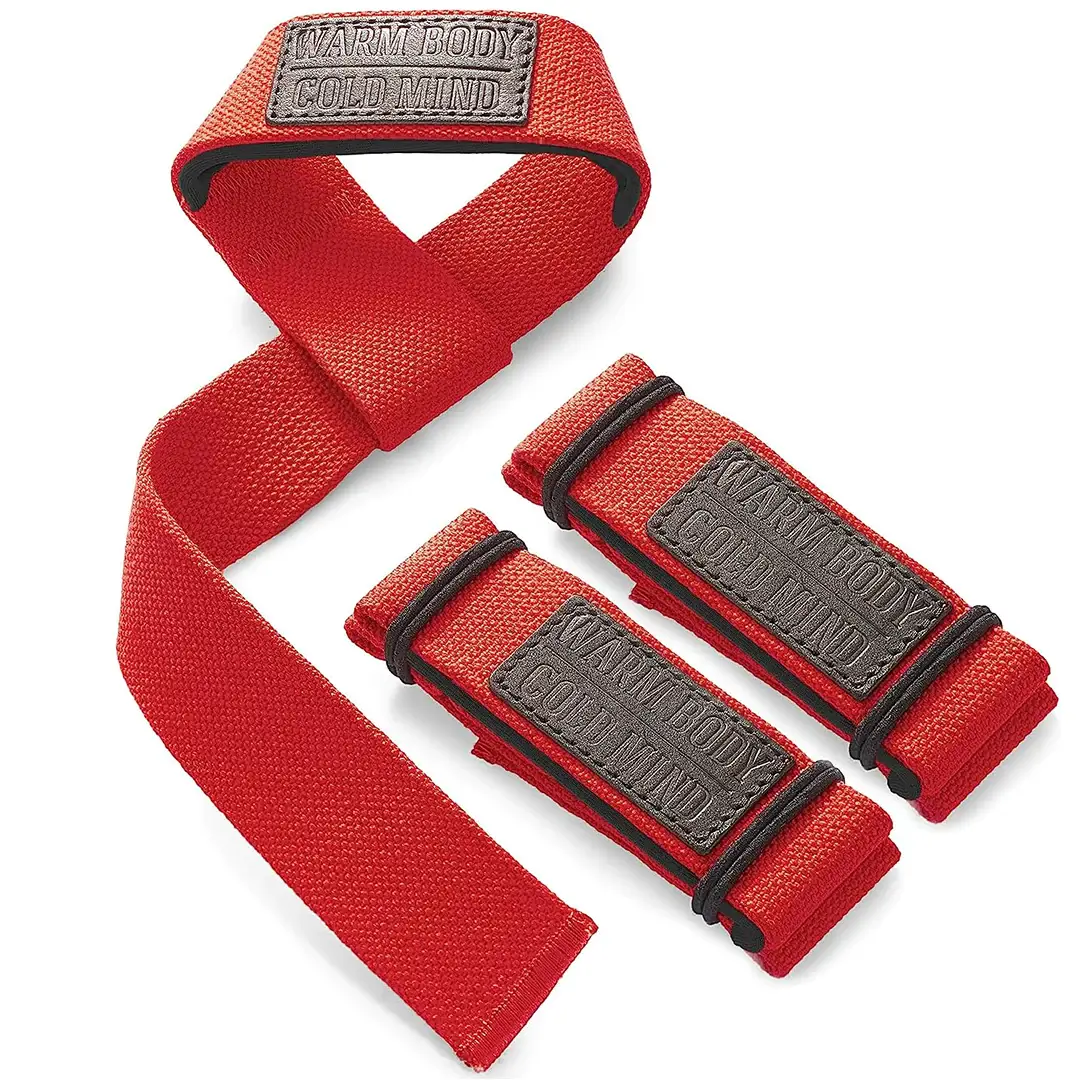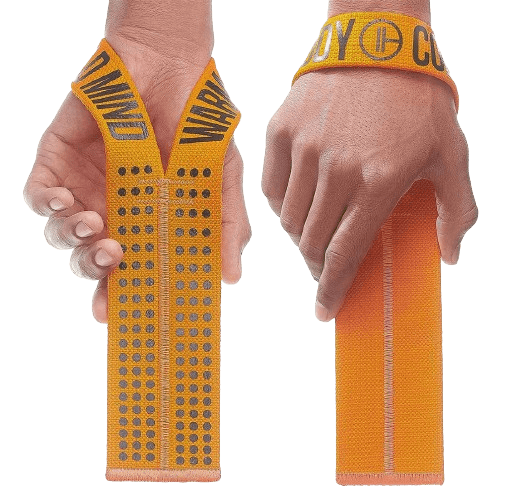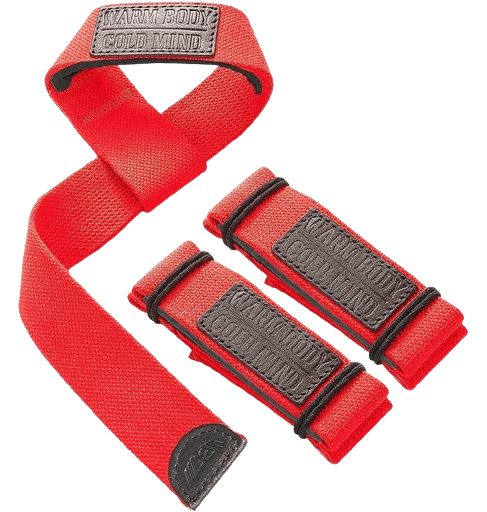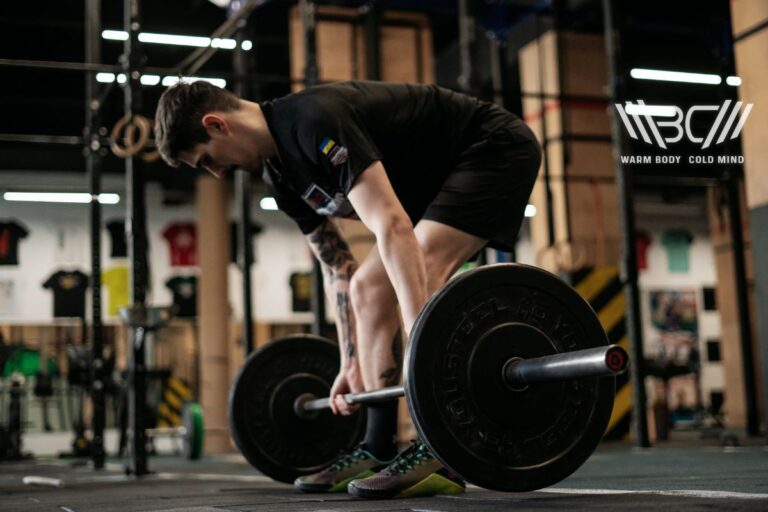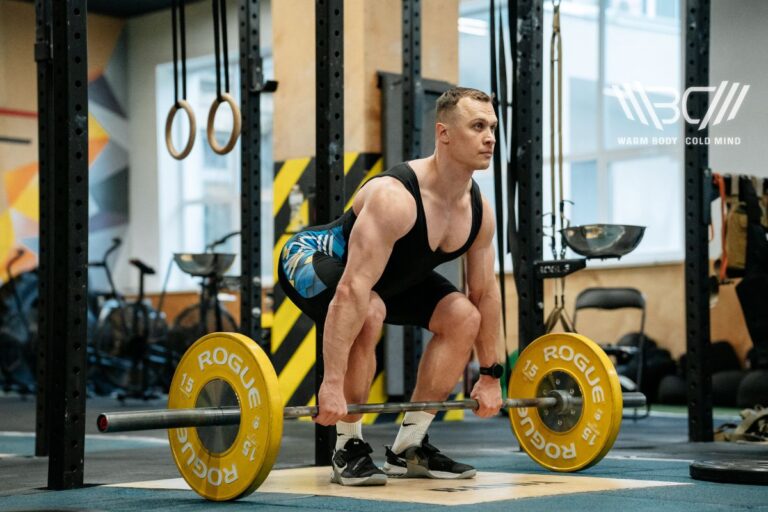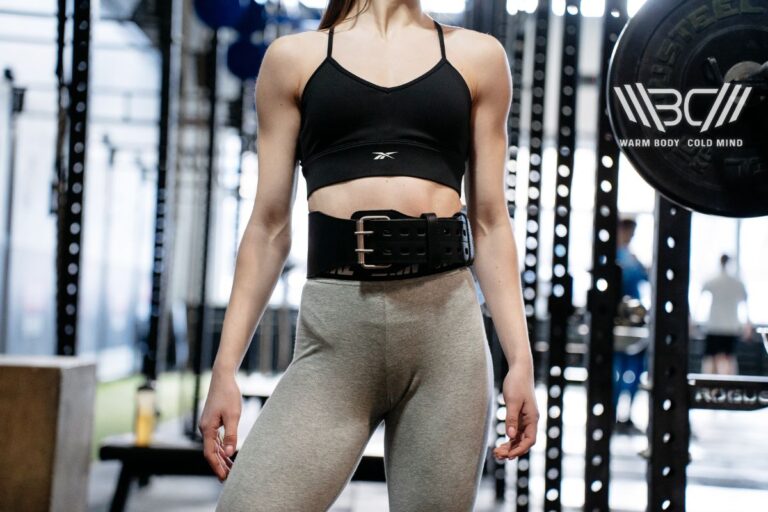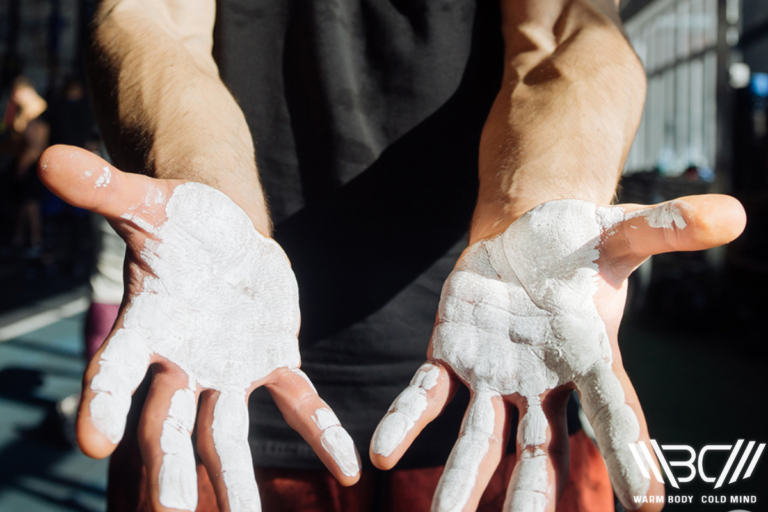How to Use Lifting Straps Correctly (Complete Guide)
Lifting straps are a versatile gym accessory that can help to build muscle, reduce injury, and improve performance by helping with grip strength and reducing rating of perceived exertion when lifting.
Understanding how to use lifting straps correctly is important if you want to get the most out of using them. We cover this alongside the different types of straps and the reasons to use them below.
How to Use Lifting Straps – Place your hands through the loops, allowing them to tighten around your wrists. Place your hands on the barbell and wrap the lifting straps underneath in circles, moving your hands to tighten them. Other types of barbell straps may be used differently.
What are Lifting Straps and How Do They Work?
Before we talk about how to use straps for deadlifts and other movements, it’s useful to understand what lifting straps do first.
Lifting straps are long lengths of material (commonly cotton, neoprene, nylon, and leather) that are designed to wrap around your wrists and the barbell to provide added support and improve grip strength.
When wearing, they fasten your hands to the barbell or other weight such as a dumbbell or kettlebell by wrapping around the bar under your hands.
You still need to hold the bar firmly when using grips meaning a certain amount of pressure is still placed on your wrists. However, using lifting straps greatly reduces this which makes holding onto the bar much easier, improving grip strength, safety, and possibly lifting performance.

Which Exercises Can You Use Lifting Straps For?
Knowing when to use lifting straps correctly is important so you don’t become over-reliant on them. You should already have developed decent natural grip strength, with lifting straps helping to improve grip rather than form a major part of it.
Here are the main situations in which lifting straps should be used:
1. For Pulling Movements
Using straps for pulling movements, especially lifts from the floor such as deadlifts, is one of the best uses for them due to the weight fighting against gravity as you pull upwards.
Pulling exercises such as deadlifts, rows, snatches, clean pulls, hang pulls, and snatch grip deadlifts are all great examples of exercises where lifting straps would be useful.
Make sure to limit the use of lifting straps to the heaviest sets, working on natural grip strength in the warm-ups.

Olympic Weightlifting Straps V1
Enhance your weightlifting experience with premium Warm Body Cold Mind Olympic lifting straps.
2. For High-Volume Work
Whilst the majority of work when using lifting straps should be limited to heavy sets, lots of high-volume work can often lead to grip fatigue and hand irritation when performed regularly.
Lifting straps may help to complete more repetitions and sets when performing high-volume training by limiting grip fatigue and reducing skin irritation. Again, the use of them should be limited to only when needed.
3. For Technique Work
Technique work requires increased focus on different elements of the lift, meaning you want to pay more attention to specific movement patterns and positions rather than holding on to the bar.
Some technique-focused work using straps can be beneficial to improve lifter confidence and performance when used correctly.
Subscribe!
The latest reviews of must-have home gym training equipment, apparel, and supplements that will enhance your performance and bring you new results.
4 Main Reasons to Use Gym Straps
The use of lifting straps can prove beneficial in many situations. Here are the main reasons to use them below:
1. You Lack Grip Strength
A common issue with lifting heavier weights, especially compound pulling movements, is the amount of grip strength required to keep the barbell or other weight firmly in your hands. Grip strength may be the limiting factor stopping you from lifting a weight when other elements such as technique and strength are at the right level.
By wrapping around the bar whilst staying attached to your hands, lifting straps help keep your hands close to the weight and reduce the amount of pressure therefore improving grip strength.
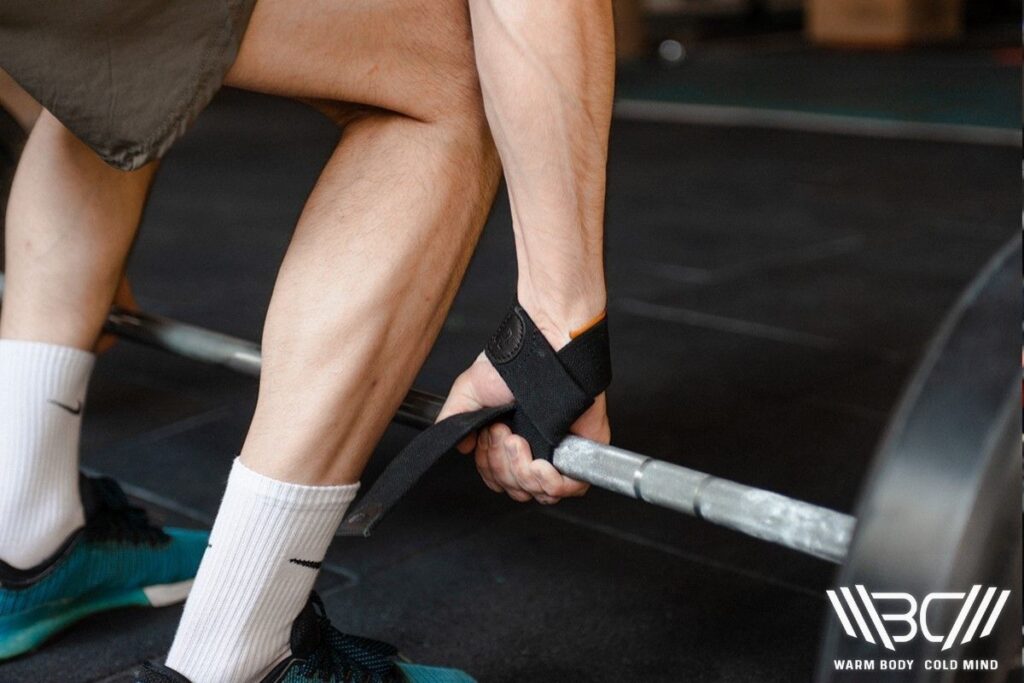
2. You Need Hand Protection
Knurling used on barbells and dumbbells helps to improve grip by providing a rough texture to keep your hands against. Different patterns and amounts of knurling determine the amount of grip offered.
If you’re using the weights frequently, the repeated impact can cause skin irritation and tearing over time. Using lifting straps can provide a durable surface between your hands and the weight to reduce the amount of pressure and irritation on your hands when lifting.

Cotton Lasso Lifting Straps Pro
Enhance your lifting experience with Warm Body Cold Mind lasso lifting straps designed for durability and comfort.
3. You Want to Perform More Reps
If you want to perform more repetitions but know your grip strength probably isn’t up to scratch, lifting straps can be a useful accessory for high-volume work.
If you’re in the middle of a workout and your hands become too fatigued to continue, use lifting straps to finish the workout without having to cut it short.
However, take care to manage the amount of work you perform using lifting straps. Make sure to focus on building your natural grip strength first and only use them in specific situations where they are actually needed.
4. You Want to Improve Lifting Confidence
An often overlooked factor limiting performance is a lack of confidence in your lifting ability and technique. Using lifting straps during certain sessions where you need to practise technique elements can help to improve your confidence and keep the focus on the specific lifting element rather than the grip strength.
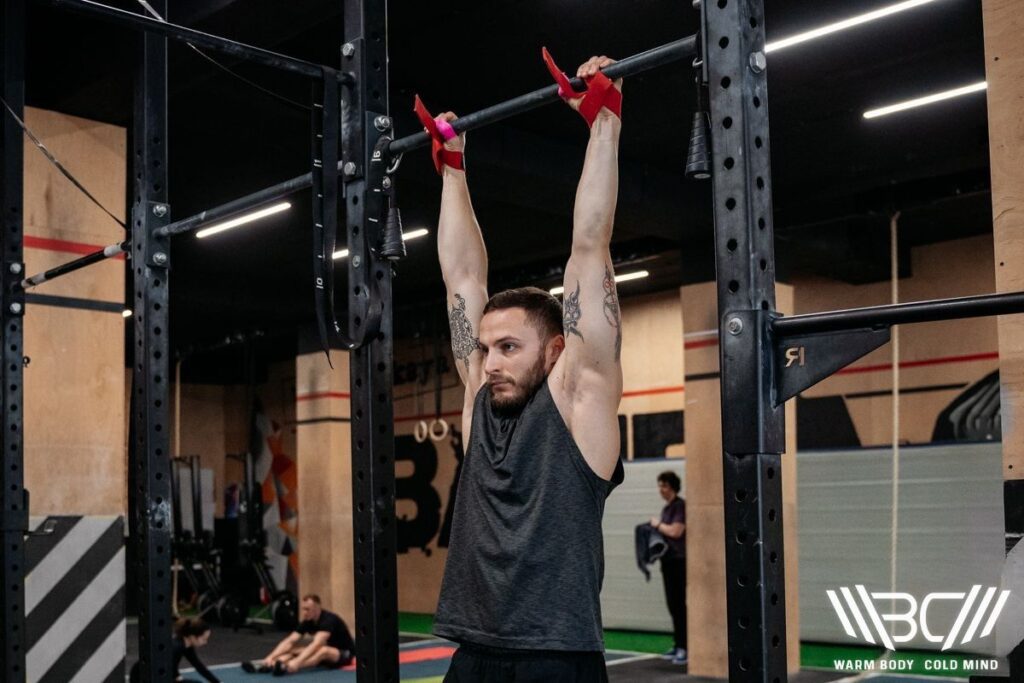
4 Different Types of Lifting Straps
Even though they mainly consist of a single length of material, lifting straps feature slightly different designs which may be more suitable depending on your training requirements. Here are the main types to look out for:
1. Closed Loop
Also known as single-loop straps, these are considered the gold standard among powerlifters and weightlifters. One end of the strap is sewn together while the other side provides a loop for your hand to slip into.
Closed loop straps provide a good middle ground between support and comfort, allowing you to easily escape the straps if needed.
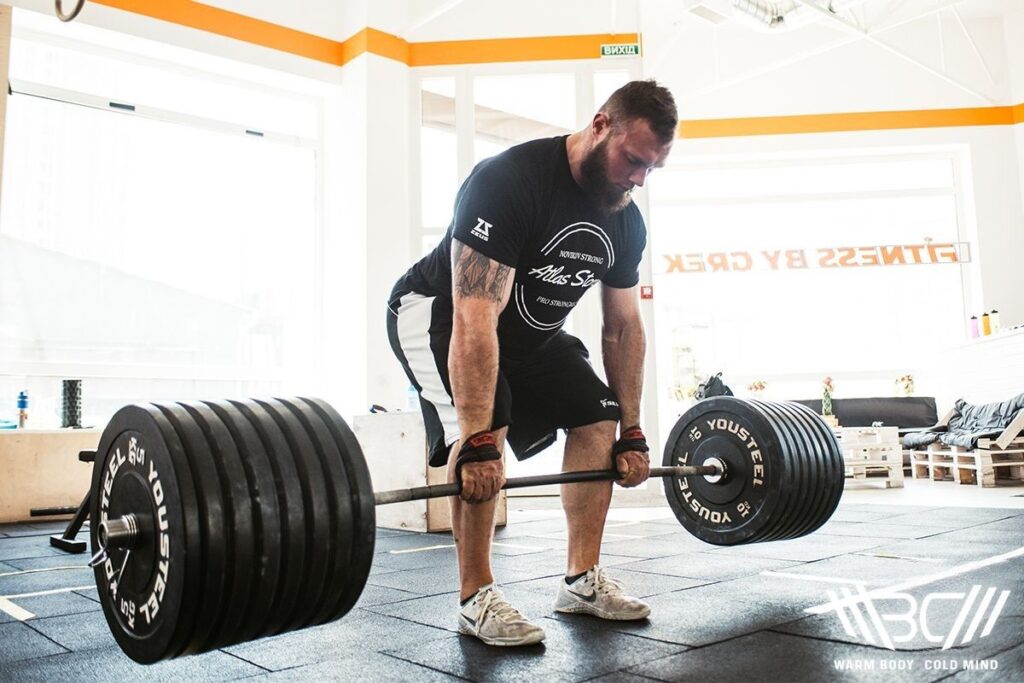
2. Figure 8
Figure-8 straps provide the most added grip strength out of all the strap types but take longer to fit correctly and provide much less movement when using them. This makes it much harder to escape the lift if it goes wrong and you need to release your hands from the weight or weights.
They are made primarily for deadlifts, heavy pulls, and sometimes strongman training. They consist of a single piece of material that is designed in the shape of the number eight which is where they get their name.
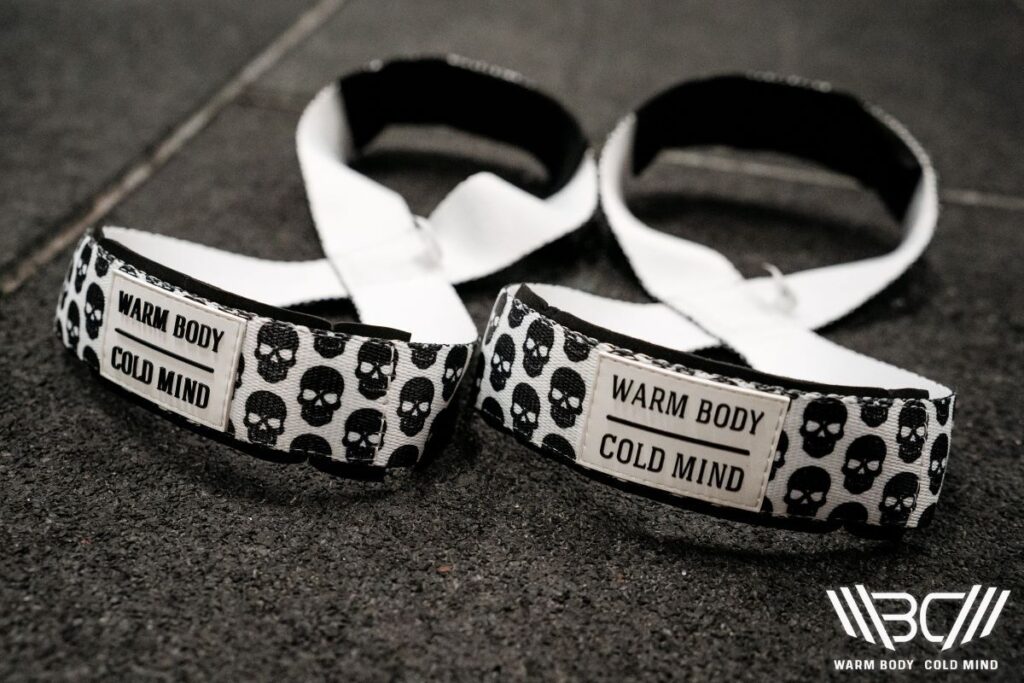
3. Lasso
Lasso straps are similar to closed-loop straps in which they provide a loop for your hand to slip in. However, the loops are smaller and feature a long length of heavy-duty material that wraps underneath the barbell to provide a secure grip.
Lasso straps are beginner-friendly but may become uncomfortable in overhead positions and can be harder to quickly remove when needed.
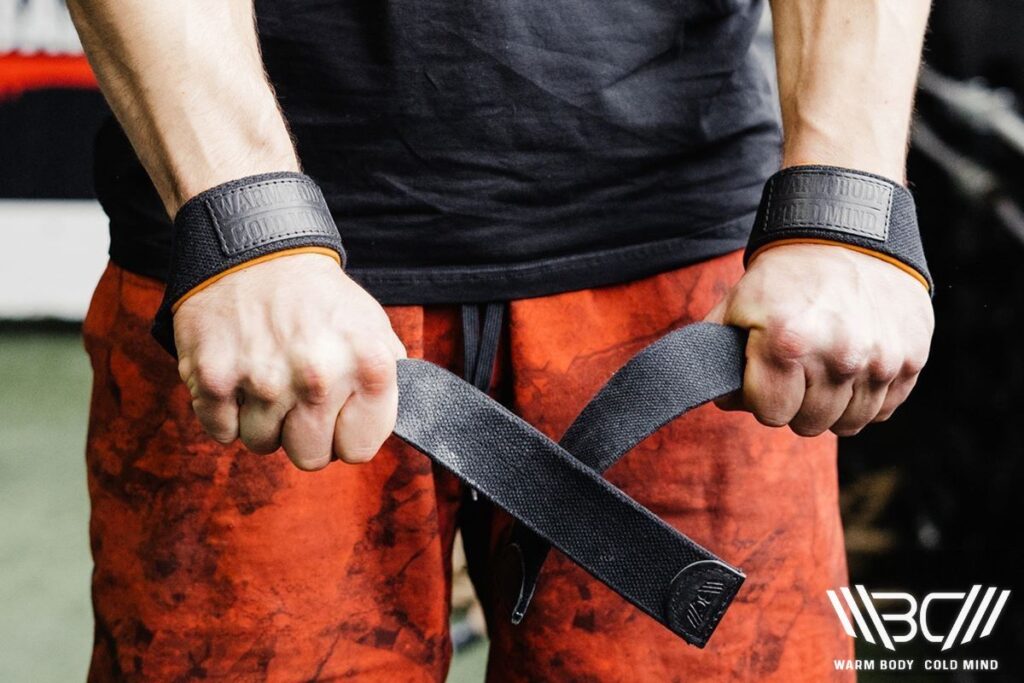
4. Free
Free straps consist of a single piece of material that isn’t bound together or stitched at any point. They offer excellent comfort and versatility but can be harder to use and don’t offer much added grip strength.
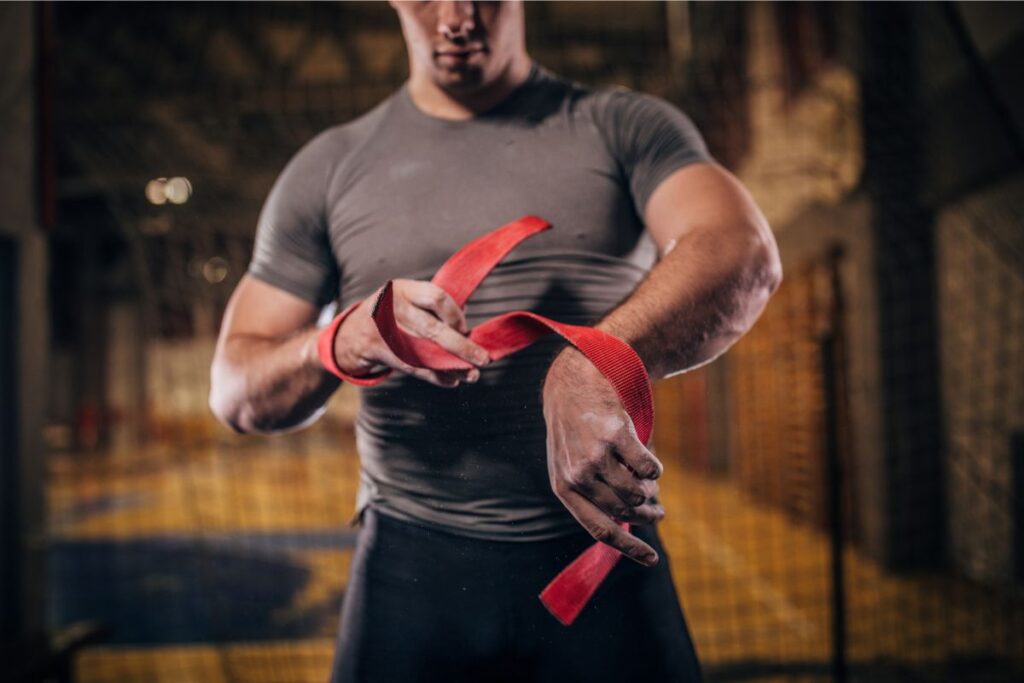
How to Use Weightlifting Straps?
Using lifting straps is quite a simple process once you have the basics figured out. We cover how to use lifting straps for deadlifts and other movements below.
Putting on the lifting straps is a fairly simple process that can be easily accomplished by following these three steps. Here’s how to put on lifting straps:
1. Slide one end of the strap through the loop opening to make a circle. Figure 8 straps may already have a ready-made hole whilst free straps don’t involve using a loop.
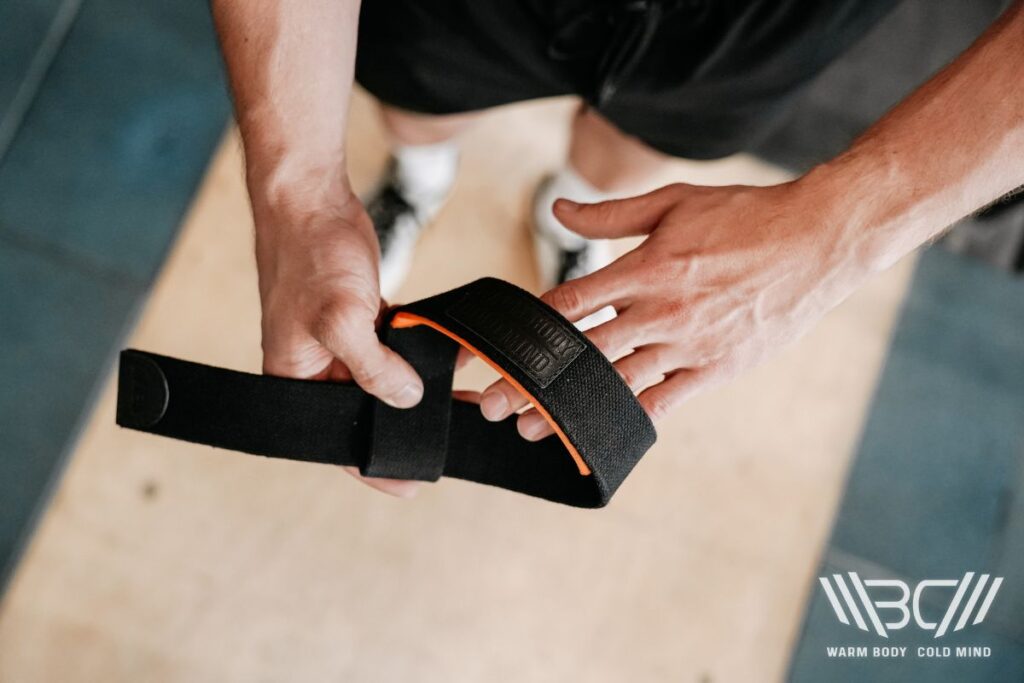
2. Open your hands with your palms facing upwards and slide the loop onto your wrists. Do this when using lasso, closed loop, and figure lifting straps.
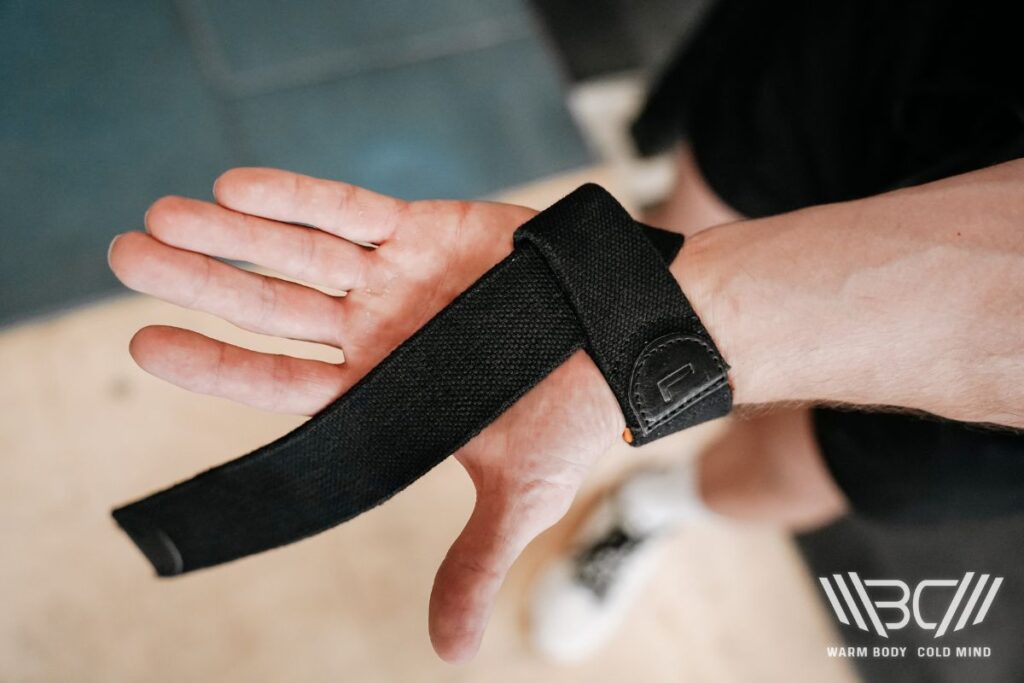
3. When using lasso straps, ensure that the ends of the straps are lined up following the direction of your thumbs

Once you have the straps correctly on your hands, here’s how to wear lifting straps:
1. The loop part of the strap should stay tight and flat against your wrist throughout the movement. Grasp the end of the strap between your finger and thumb (if using lasso straps).
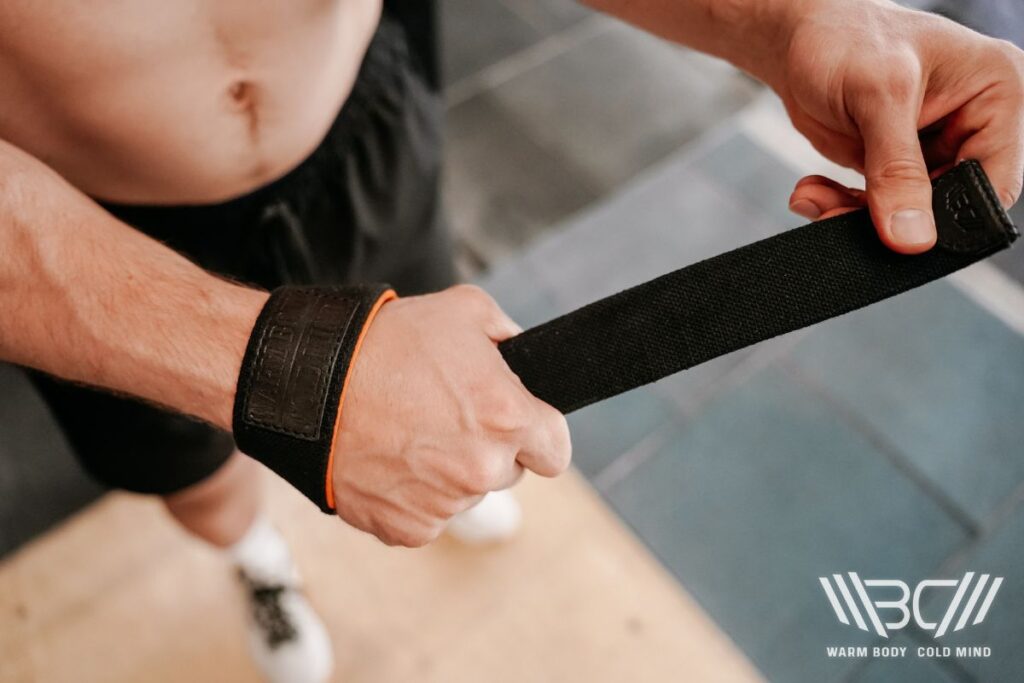
2. Place your hand on the barbell or other weight and loop the strap underneath, around, and back towards your hand. Pull the loop between your fingers to tighten the steps and draw the barbell closer to your hands.
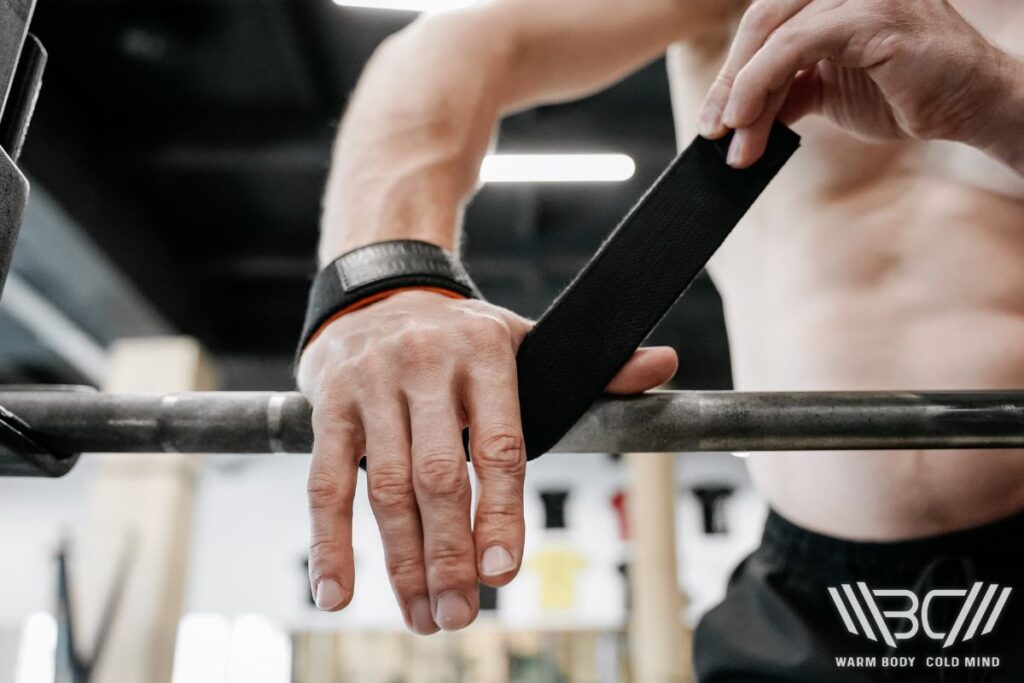
3. In the case of Figure 8 straps, the second loop goes under the bar and then back through your hand before you grasp the bar. Free straps provide a surface between your hand and the barbell meaning they don’t wrap around.
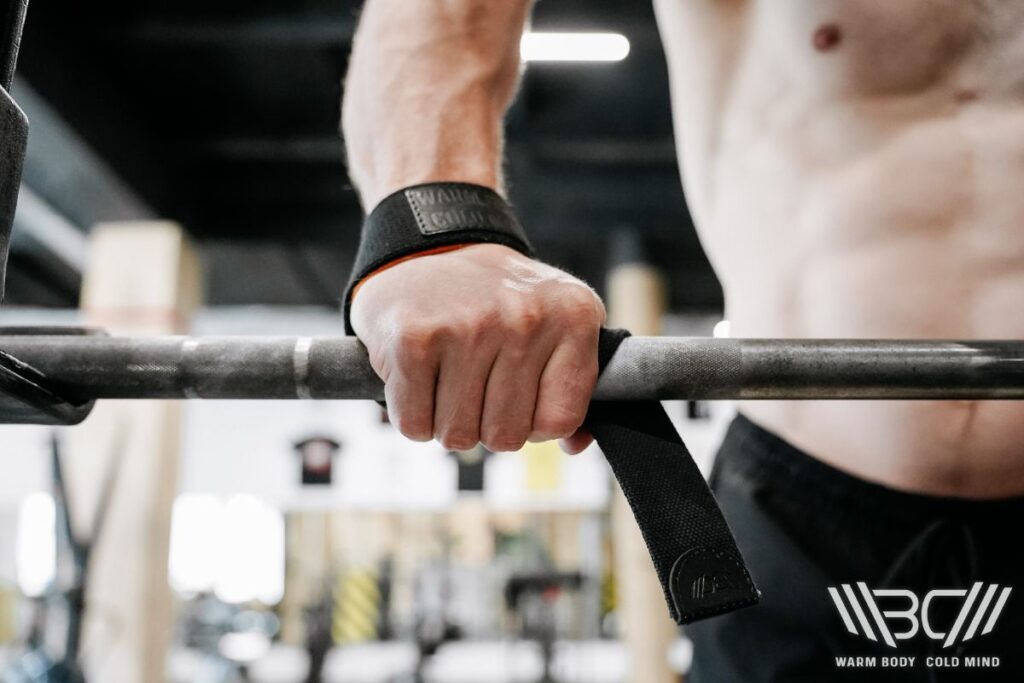
4. Ensure the straps keep your hands tight to the barbell or other weight throughout the full movement. Readjust as needed, taking the straps off and wrapping them back around in some cases.
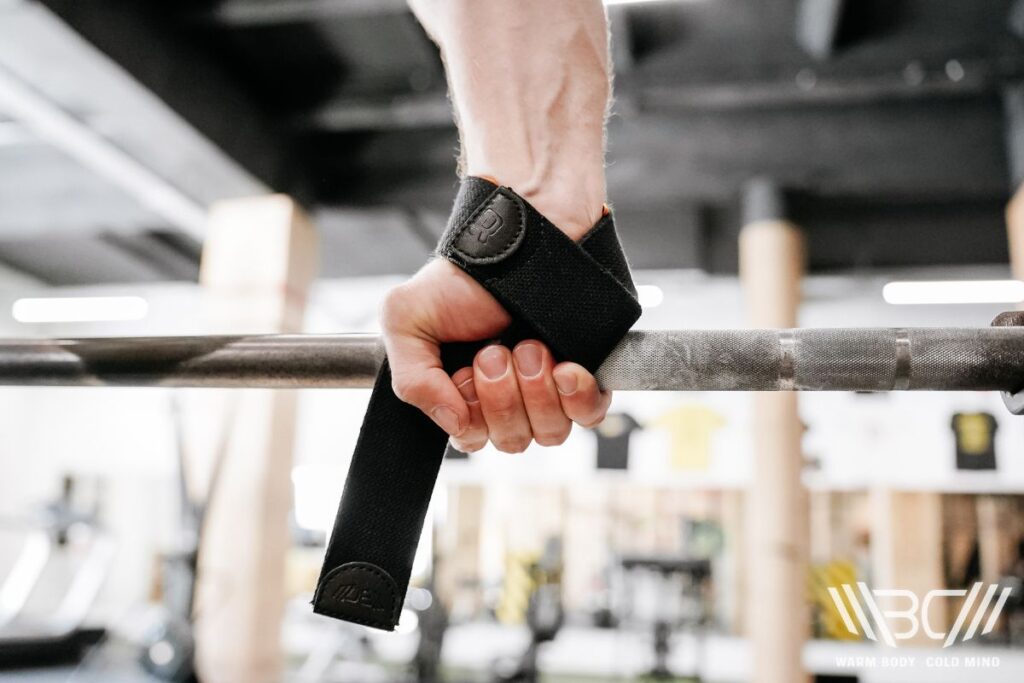
How to Use Wrist Straps for Different Exercises?
With the main exercises we’ve listed above (deadlifts, snatches, cleans, clean pulls) the process of fitting and using the lifting straps is pretty much the same.
Bare in mind that in the deadlift, your hands stay in the same position which means you should have no issues keeping the straps tightly secured. Snatches and cleans require some barbell movement so may need more readjusting during sets and take more time to get used to.
Our Recommended – Weightlifting Wrist Straps V1
Our Weightlifting Wrist Straps V1 have been personally designed by Olympic champion Oleksiy Torokhtiy meaning the end product reflects years of elite-level lifting experience. They have been crafted to enhance grip strength and improve lifting performance.
Made from premium cotton material, the V1 wrist straps have a dual stitching design which improves their durability and allows them to handle weights of over 660 pounds (300 kg). This should be enough to handle serious lifting with no issues.
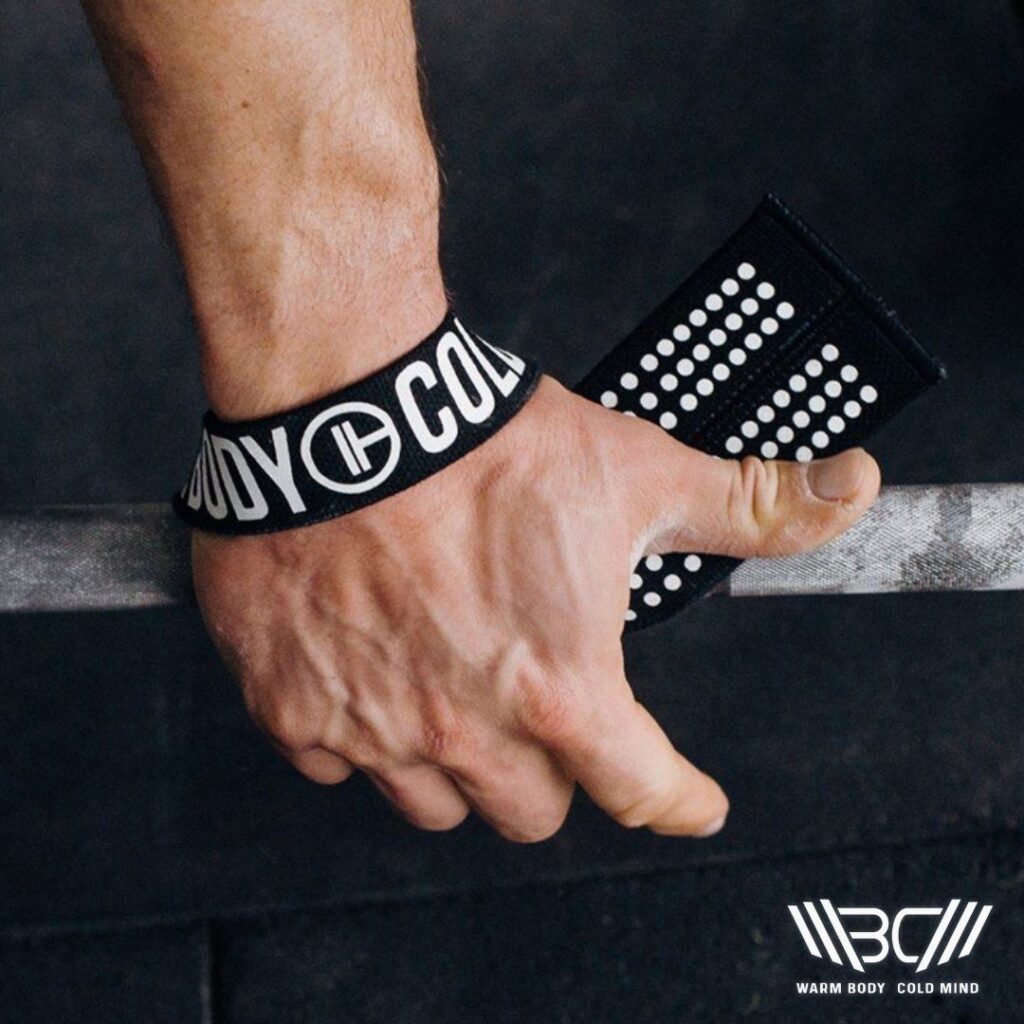
Our grips measure 13” L x 2.5” W in a one-size-fits-all design that should be suitable for different lifter hand sizes.
Our V1 grip straps are specially designed for weightlifting, powerlifting, bodybuilding, and functional fitness training. They come in 11 different color schemes with our warm body cold mind (WBCM) branding on the side.
Our Other Recommended – Weightlifting Straps Lasso Pro
Our Lasso Pro Weightlifting Straps provide another excellent strap option personally designed by Olympic champion Oleksiy Torokhtiy. They’re constructed using a blend of durable cotton, soft neoprene, and real leather to give you a strong, comfortable grip on the barbell.
The overall design really has a premium feel to it, making these straps a great option if you’re looking for something that’s well designed and has a high-quality finish.
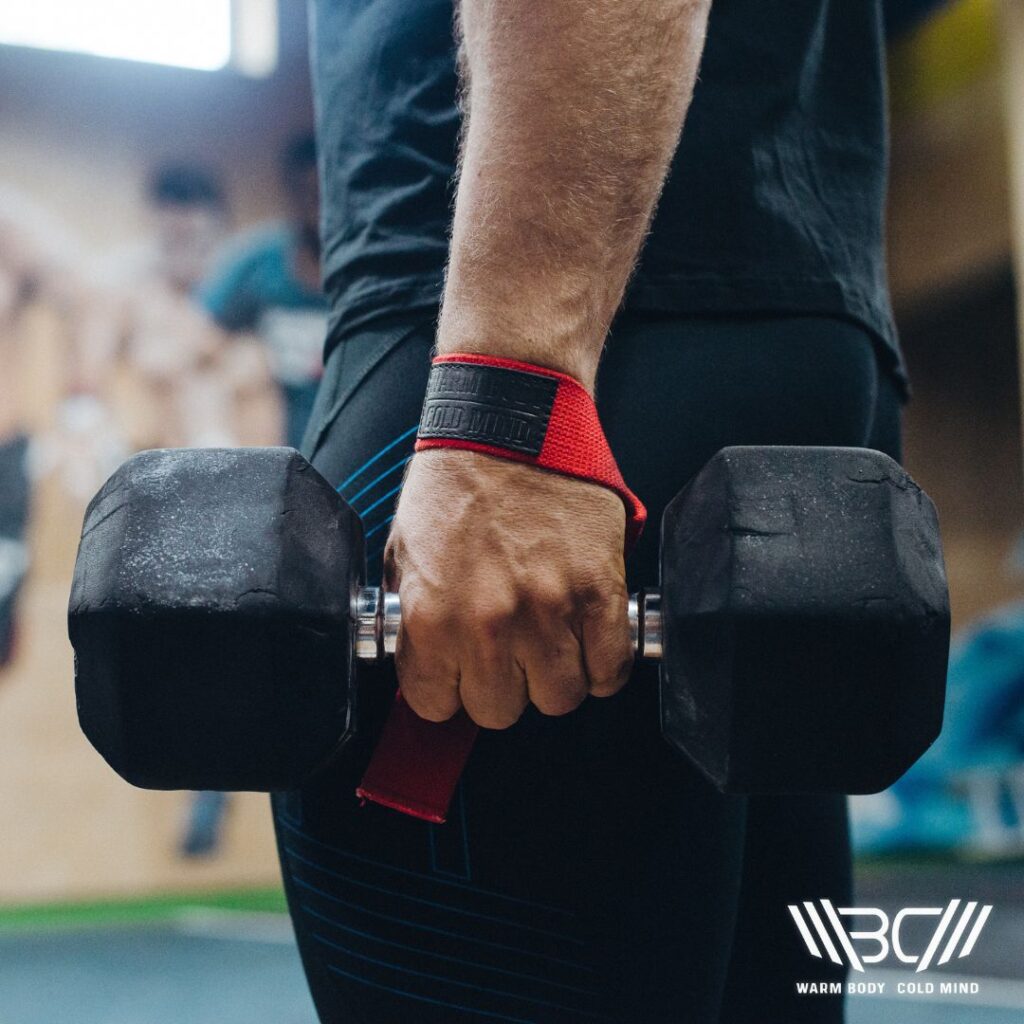
With reinforced dual stitching throughout, the straps can handle a massive 770 pounds which should be plenty for even the most experienced lifters. In terms of dimensions, the straps measure 21” L x 1.6” W x 0.25” T. They come in either red or black, with our branding nicely stitched into the sides.
We’ve designed them for powerlifting, bodybuilding, weightlifting, and functional fitness.
FAQ
Why Do Lifting Straps Work?
Using lifting straps when performing compound exercises helps to improve grip strength by reducing the strain on your hands and wrists from the barbell. They provide stability and support, meaning they may help to improve your lifting numbers when used correctly.
Are Lifting Straps Better Than Gloves?
The right choice between lifting straps and gloves mainly depends on your specific exercise goals and needs. If the bulk of your training consists of heavy compound lifting where you need to improve grip strength and wrist stability, go with lifting straps.
If your training consists of more general lifting and you want more comfort, padding, and callus protection then go with gloves.
Are Lifting Straps Worth It for Beginners?
Whilst you may believe lifting straps can be beneficial at any experience level, they are less likely to benefit you as a beginner where you won’t be lifting large amounts of weight yet.
Allow yourself to develop the correct technique and build up grip strength before considering adding lifting straps to your gym bag.
What Is the Difference Between Lifting Straps and Wrist Wraps?
As a single piece of material that wraps around, lifting straps tie your hands to the weight whether it’s a barbell, dumbbell, kettlebell, or something else. This helps to improve your grip strength.
Wrist wraps go around the wrist joint, helping to provide support and stability to the wrist and surrounding structures. This allows for a safer and more comfortable lifting experience when moving heavy loads and also reduces the chances of injury.
Conclusion
When used correctly, lifting straps are a great gym accessory that may help to improve performance by improving grip strength and lifting confidence.
Make sure to use them in moderation and follow the guidance above to use them safely and correctly. Choose the most suitable type for you and consider the products listed as some of the best options to consider.
Have you used lifting straps before? What do you think of the ones mentioned above? Have you had any issues when using them? Let’s chat about it below!
References:
- Shirley S. M. Fong, Louisa M. Y. Chung, Yang Gao, Jeff C. Wai Lee, Tak C. Chang, Ada W. W. Ma, “The influence of weightlifting belts and wrist straps on deadlift kinematics, time to complete a deadlift and rating of perceived exertion in male recreational weightlifters: An observational study,”. Medicine (Baltimore) 7, no.101 (2022):e28918. doi:10.1097/MD.0000000000028918
- Ivan Jukic, Amador García-Ramos, Jiri Baláš, Jan Malecek, Dan Omcirk, James J. Tufano, “Ergogenic effects of lifting straps on movement velocity, grip strength, perceived exertion and grip security during the deadlift exercise,” Journal of Physiology and Behaviour no.229 (2021):113283. doi:10.1016/j.physbeh.2020.113283
- Victor S. Coswig, Frieitas Machado, Diogo Felipe, Paola Gentil, David H. Fukuda, Fabricio B. Del Vecchio, “Kinematics and Kinetics of Multiple Sets Using Lifting Straps During Deadlift Training,” Journal of Strength and Conditioning Research 12, no.29 (2015):3399-3404. doi:10.1519/JSC.0000000000000986
- Strength Shop, “How to Use Figure 8 Lifting Straps,” YouTube, https://youtu.be/M-wUGOhF7E8?si=-vgxe-ApH3ChqEy- (Accessed December 24, 2023)
- Barbell Logic, “Complete Guide to Lifting Straps: How, When, and Why to Use,” YouTube, https://youtu.be/BEkC01Mn1K0?si=eKk4L0Sc1fR3A8wL (Accessed December 24, 2023)
Author: Sergii Putsov
PhD in Sport Science, Olympic weightlifting, Strength & Conditioning coach and fitness expert
Sergii Putsov is a professional weightlifter with over 20 years of experience and multiple national medals. He was a member of the National weightlifting team, competing in the 94 kg weight class. Sergii holds a master’s degree in Olympic & Professional Sport Training and a Ph.D. in Sport Science. After his athletic career, Sergii transitioned into coaching and is now responsible for designing training programs, writing blog articles, providing live commentary for international weightlifting competitions, and hosting sport and fitness seminars worldwide.

